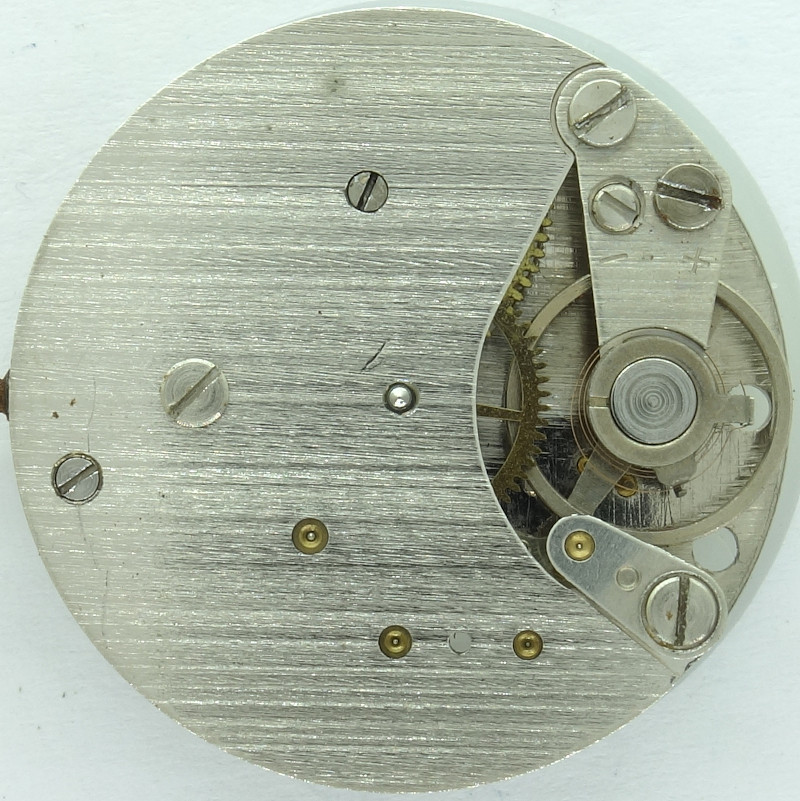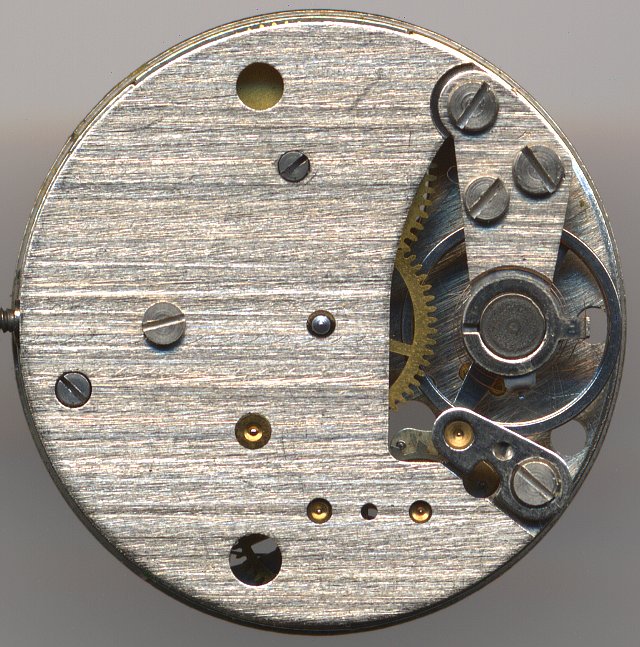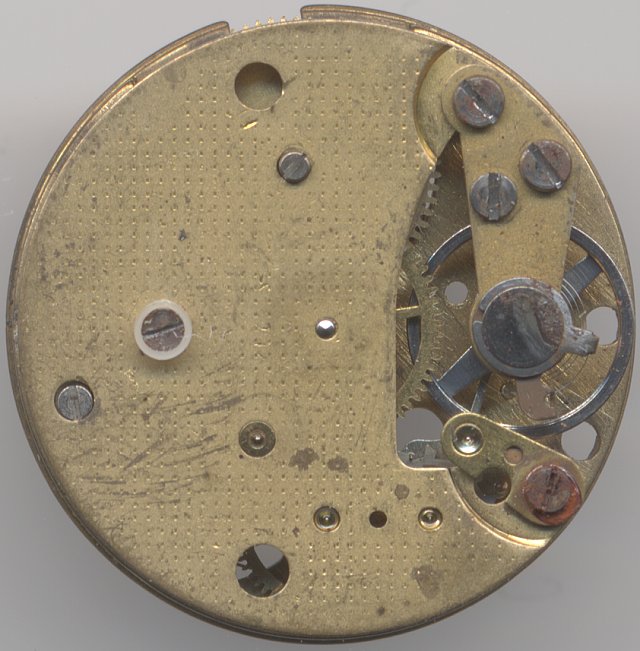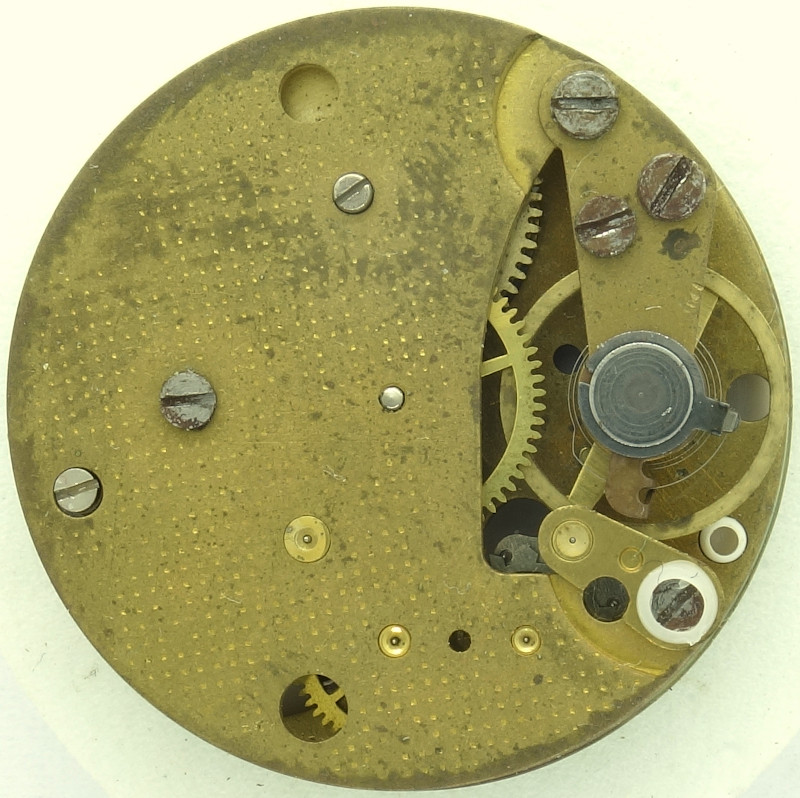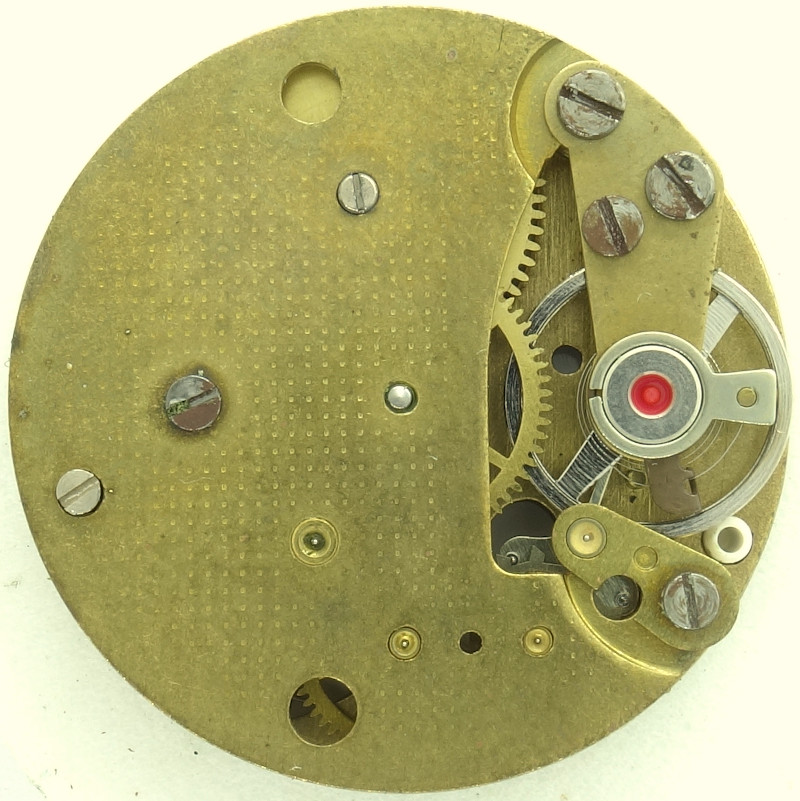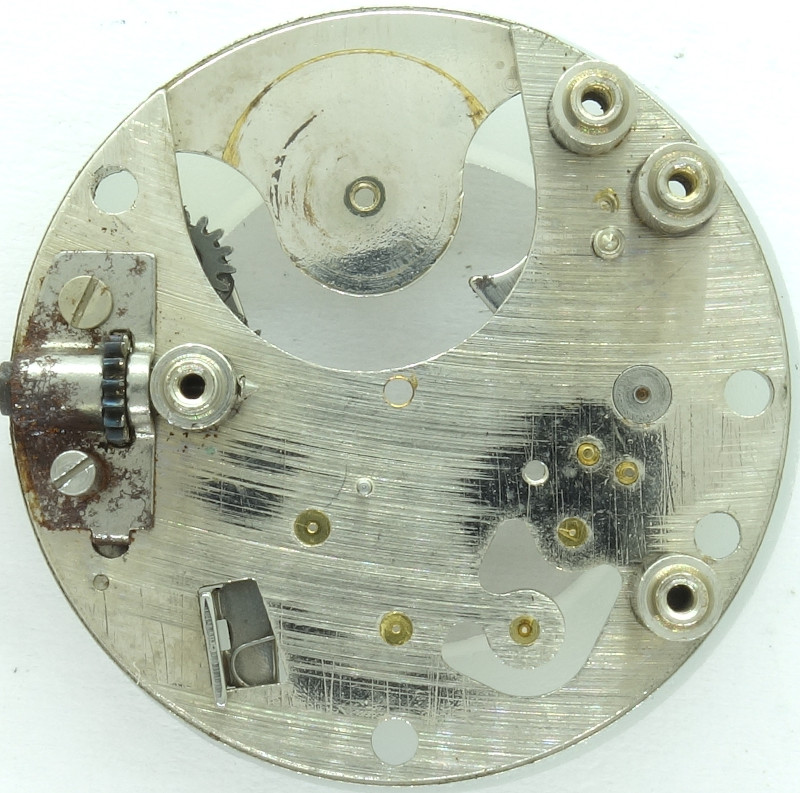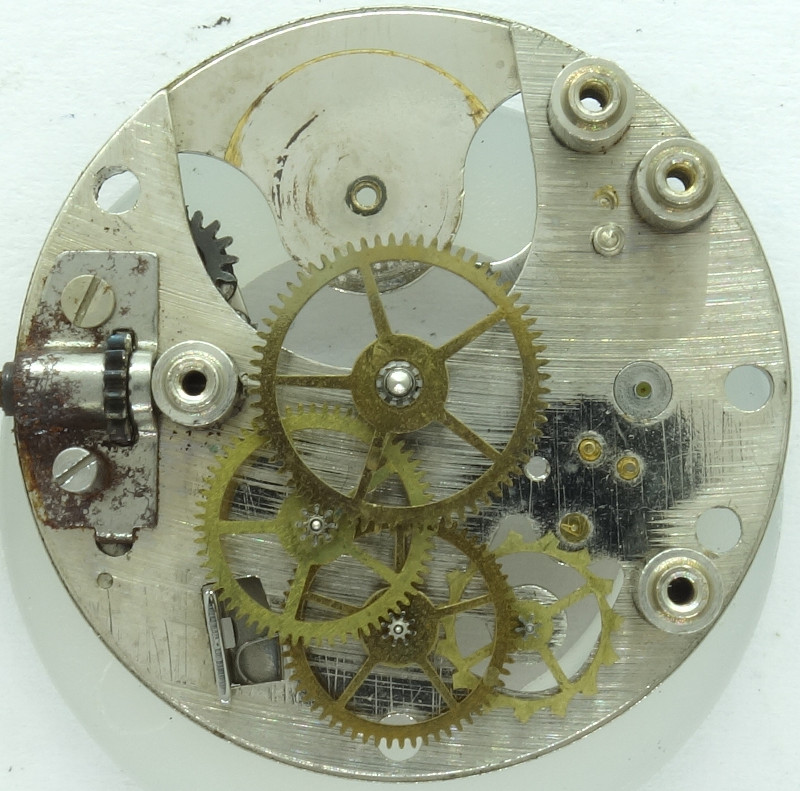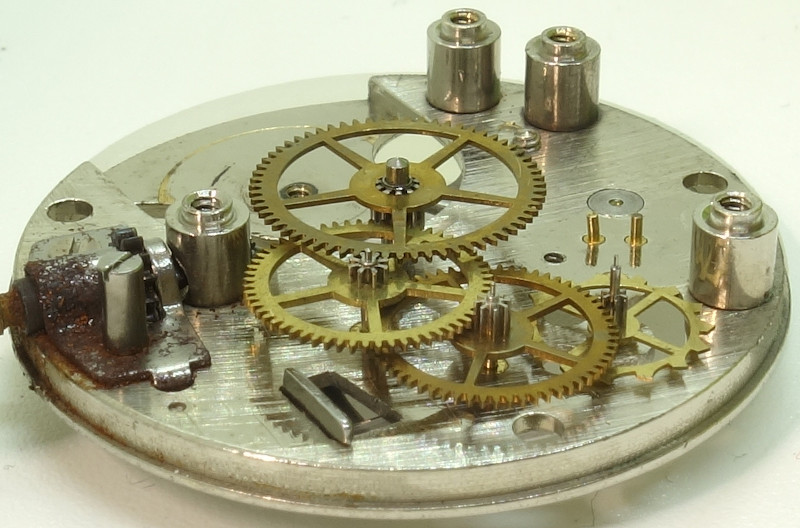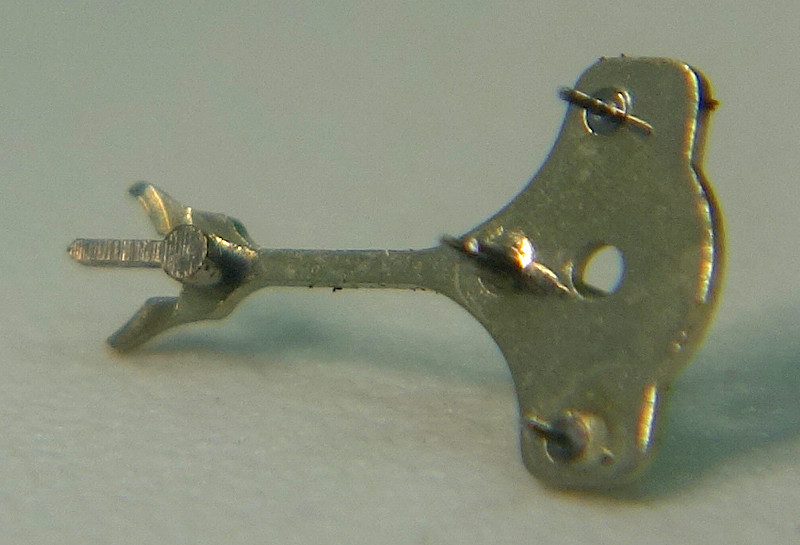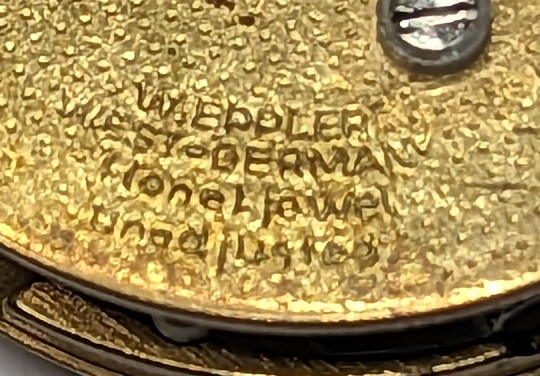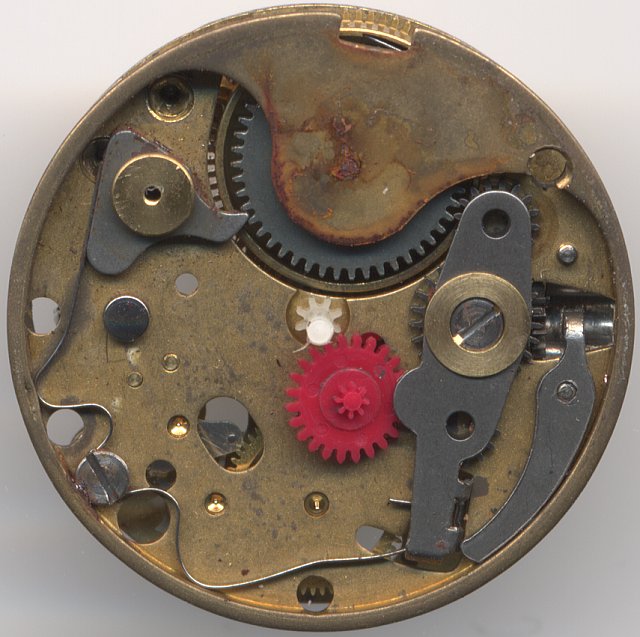Description
One of the most common wrist watch movements from (Western) Germany is the Eppler 16, a simple 10 1/2 ligne pin lever movement with optional decentral seconds indication at 6 o’clock.
It was made from the 1960s until the late 1980s and got several changes over the long production run, like modified gear train bridges or the use of plastic gears.
Regarding the plastic spacers, which attach the movement quite immobile to the back, there were several variants during the years.
There were even experiments with plastic shock protecting bearings:
The Eppler 16 corresponds to the Eppler 17 with the sole difference, that here, the balance wheel has got a pointed staff.
The base plate of this pillar movement is as simple made as possible, there are no bearing jewels, on the later version, the brass bushings were replaced by simple drillings into the (brass) plate.
The gear train is as classical constructed, as it can be on a 10 1/2 ligne pin lever movement: Mainspring barrel, central minute wheel, third wheel, decentral seconds wheel at 6 o’clock and escape wheel.
As escapement, a pin lever is used.
The balance wheel has got a pointed staff and hence needs no further shock protection. It beatsl slowly with 18000 A/h can be adjusted at the hairspring key only.
Unlike on its relative, the Eppler 6, the hairspring stud is moveable on the Eppler 16, which allows easy zeroing the beat error.
The height play of the balance cock, which is important on a pointed staff, can be adjusted shirt-sleeved with a third screw on the balance cock, which bends it more or less upwards.
A few rare versions even had an engraving on the gear train bridge:
W.Eppler
West-Germany
1 (one) Jewel
unadjusted
There existed versions with zero and versions with one jewel. When one jewel was used, it was the ellipse of the balance.
On the dial side, you see the rocking bar winding system and the ratchet, which is well executed for such a simple movement.
During the long construction years, there were rationalizations on the dial side, too, like the riveting of the ratchet, or the use of plastic gears for the cannon pinion and the changer wheel.
As the mostly bad condition of these movement tells, they were used as so called “strain watches”, cheap watches, which could or should not be protected, but had to be used a few years.
Often, these watches were sold under the label “Anker 100” in all kind of designs, but always with the same case shape.
Technical data
| Manufacturer: | Eppler |
| Caliber: | 16 |
| Caliber base: | Eppler 16 |
| Size: | 10 1/2''' (measured: 23,4mm) |
| A/h: | 18000 |
| Number of jewels: | 0/1 |
| Escapement: | Pin lever |
| Balance types: |
Nickel anular balance |
| Shock protection(s): |
none |
| Balance bearing / direction hairspring: | Clockwise |
| Moveable stud: | yes |
| Adjust mechanism: | Hairspring key |
| Construction: |
|
| Winding mechanism: | rocking bar winding system |
| Setting lever spring: | 3 hole(s) |
| Features: |
|
| References: |
Flume: K3 67 |
| Mentioning in literature (years): | 1965 - 1970 |
| Inventory number: | 22059 |
Usage gallery
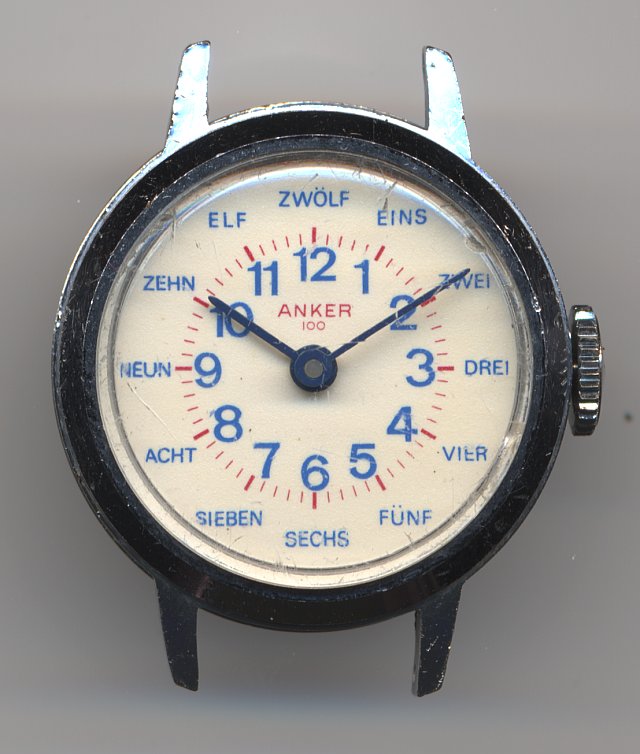
Anker 100 learning watch

Ancre Goupilles ladies' watch
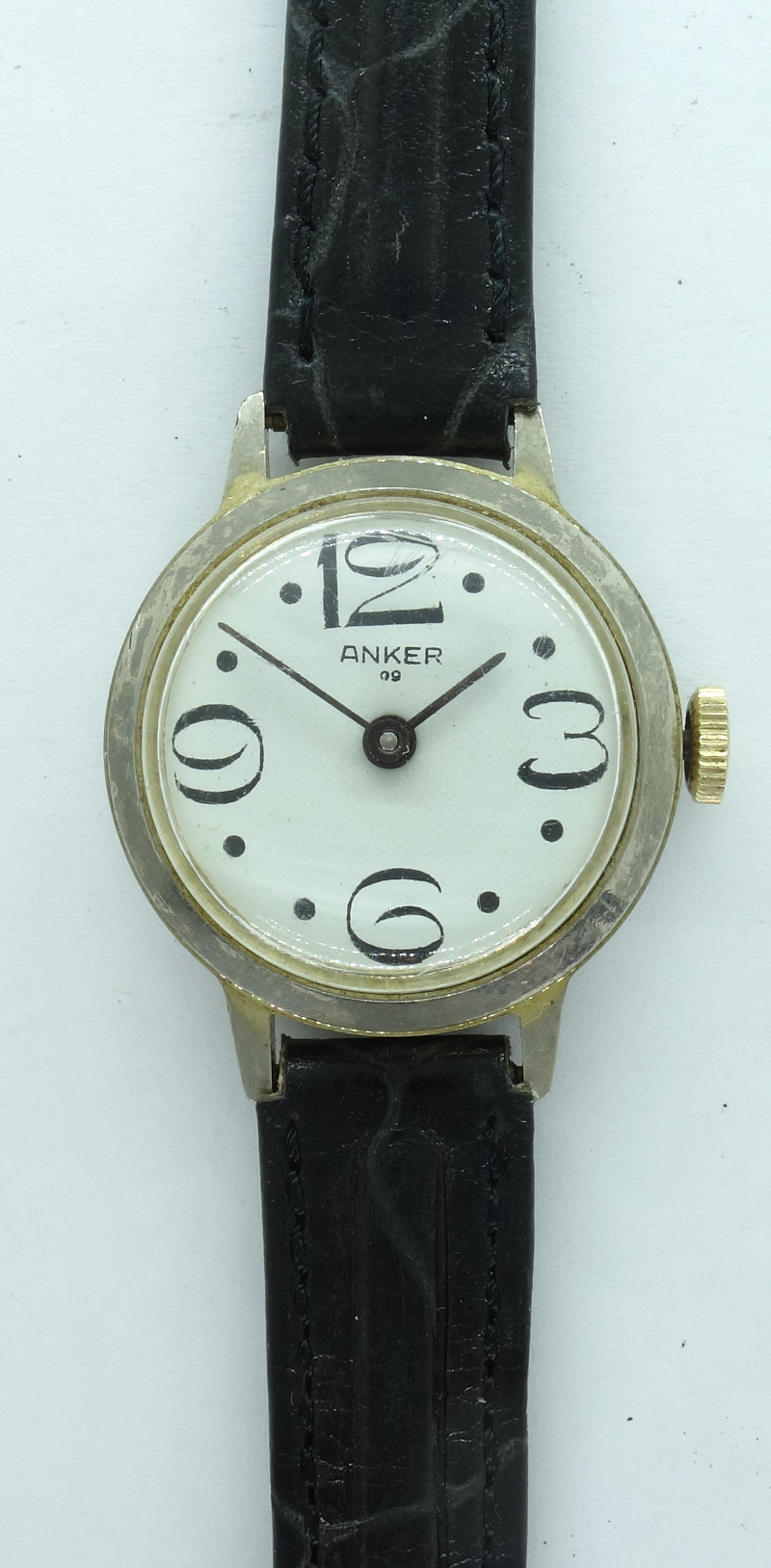
Anker 100 ladies' watch
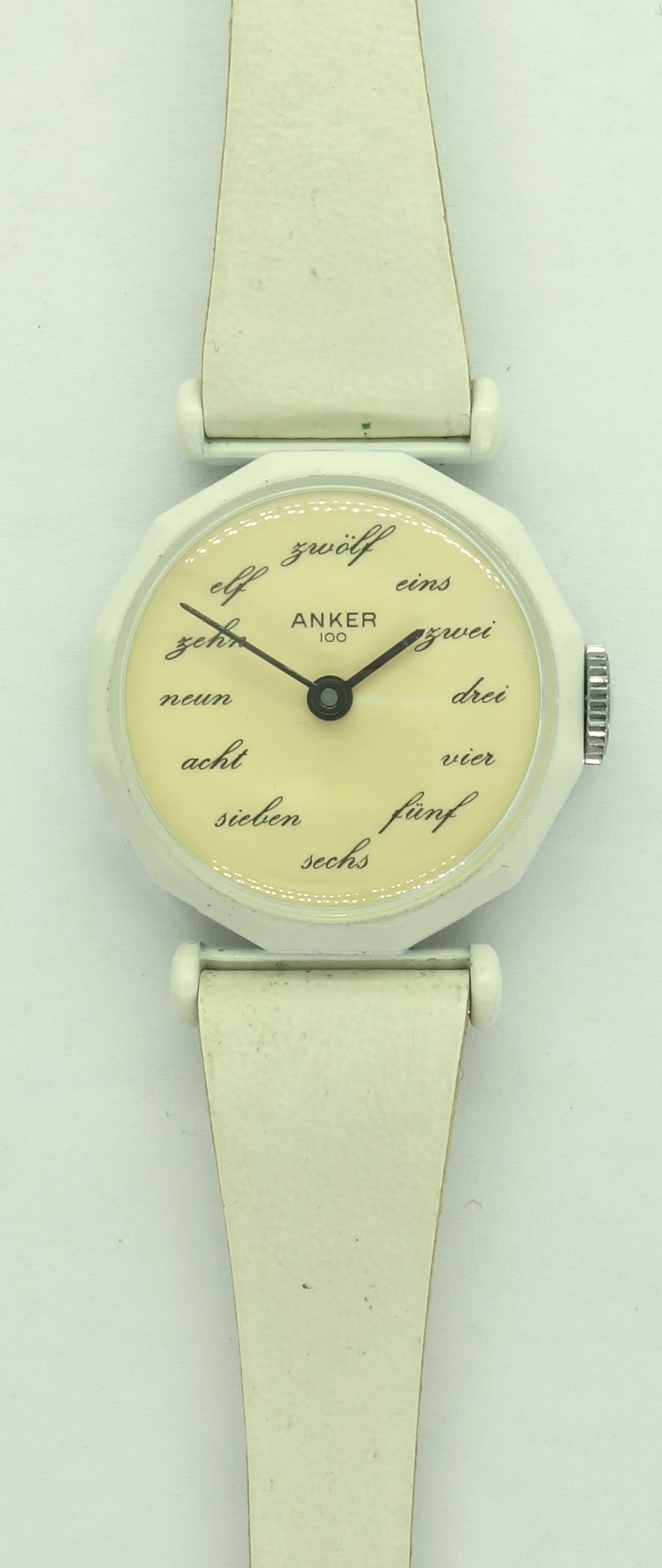
Anker 100 ladies' watch
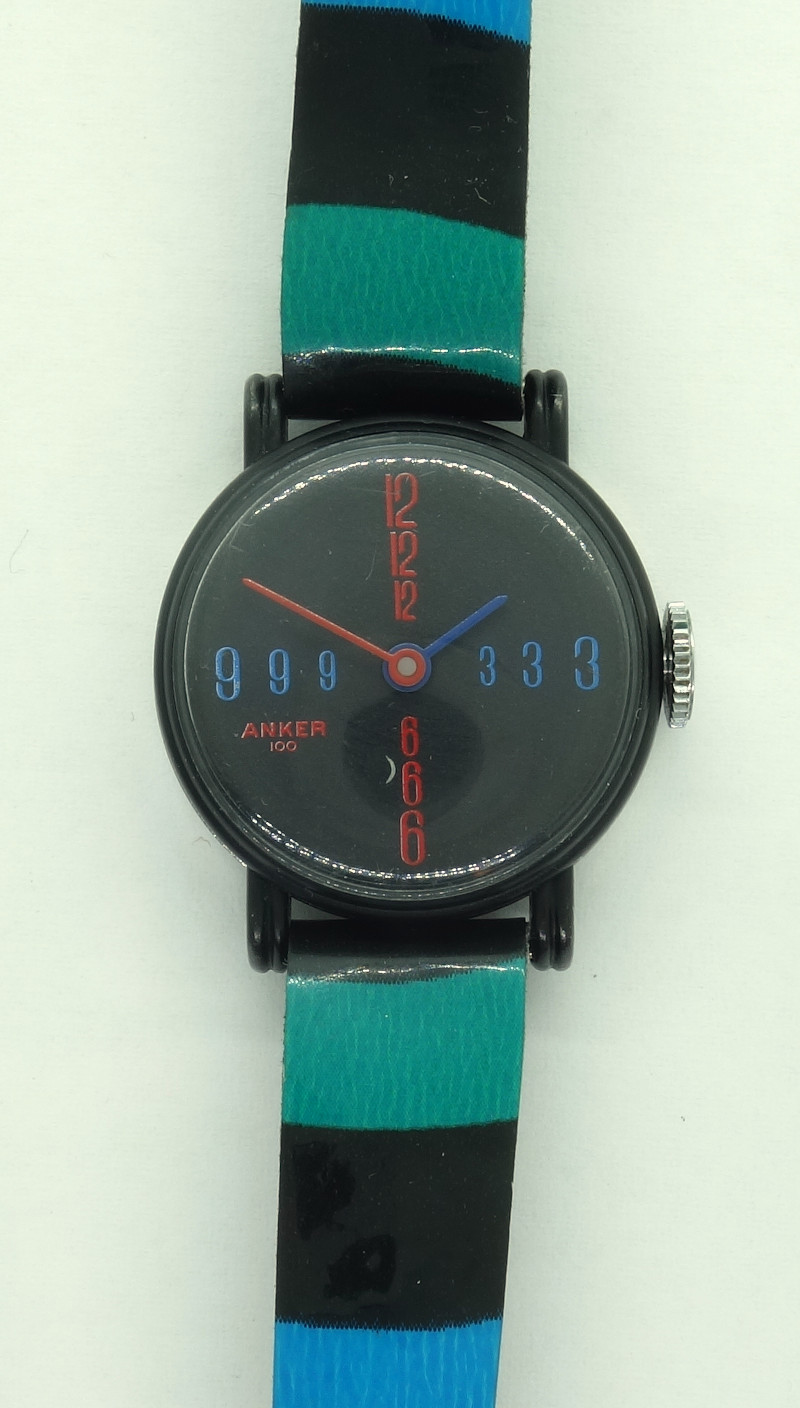
Anker 100 ladies' watch from the 1980s

Anker 100 Teddy learning watch
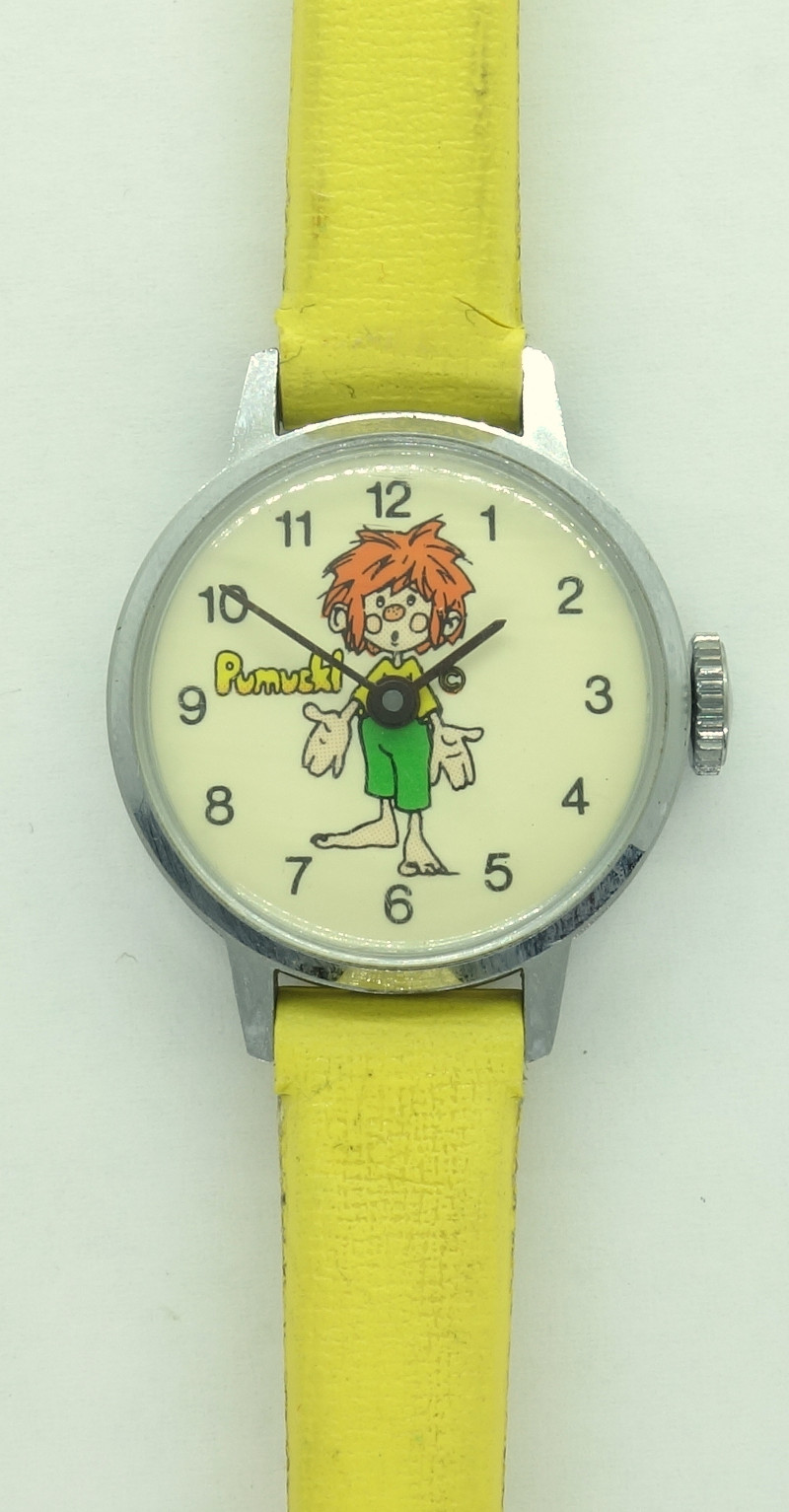
Character watch "Pumuckl"
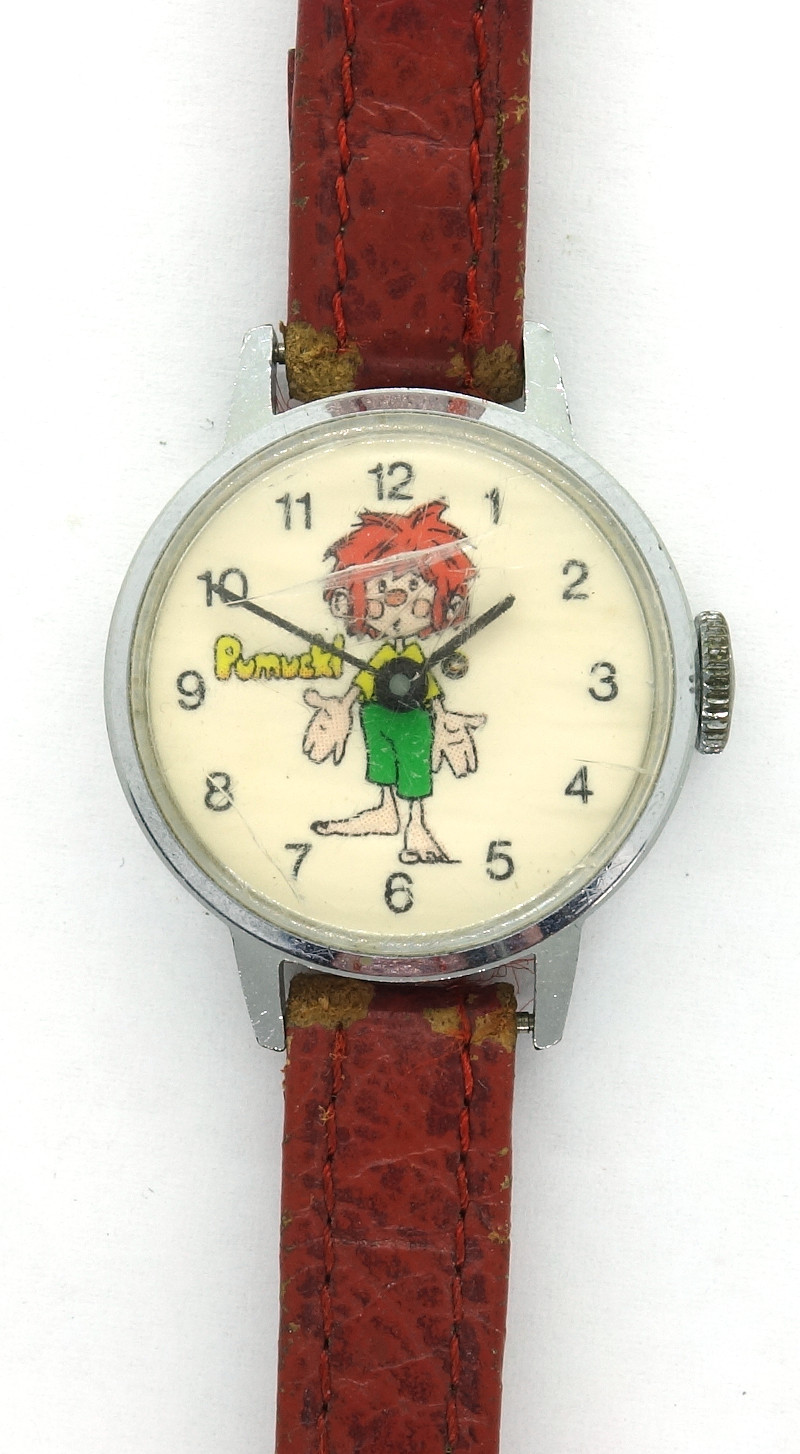
Character watch "Pumuckl"
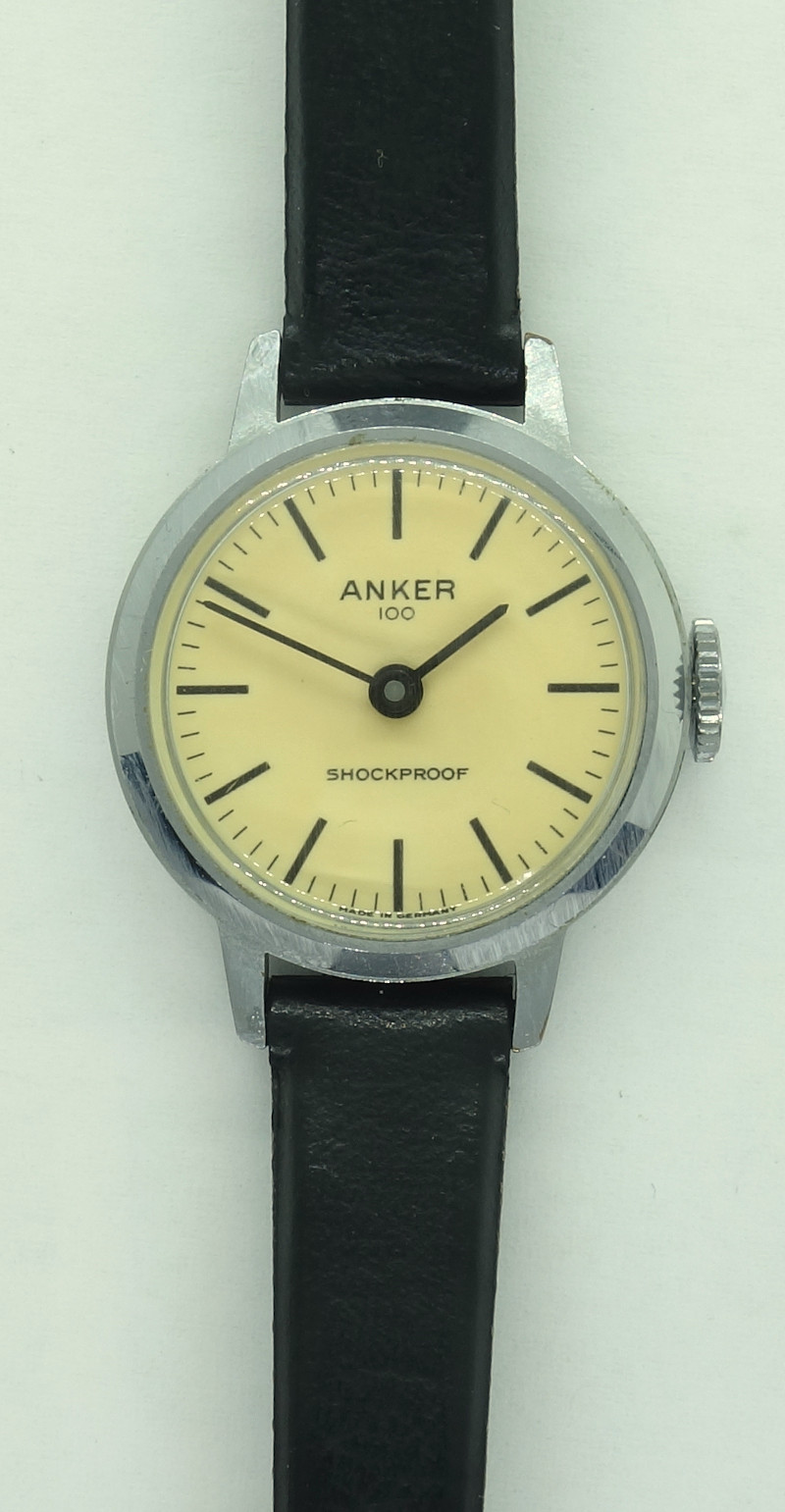
Anker 100 "Shockproof" ladies' watch
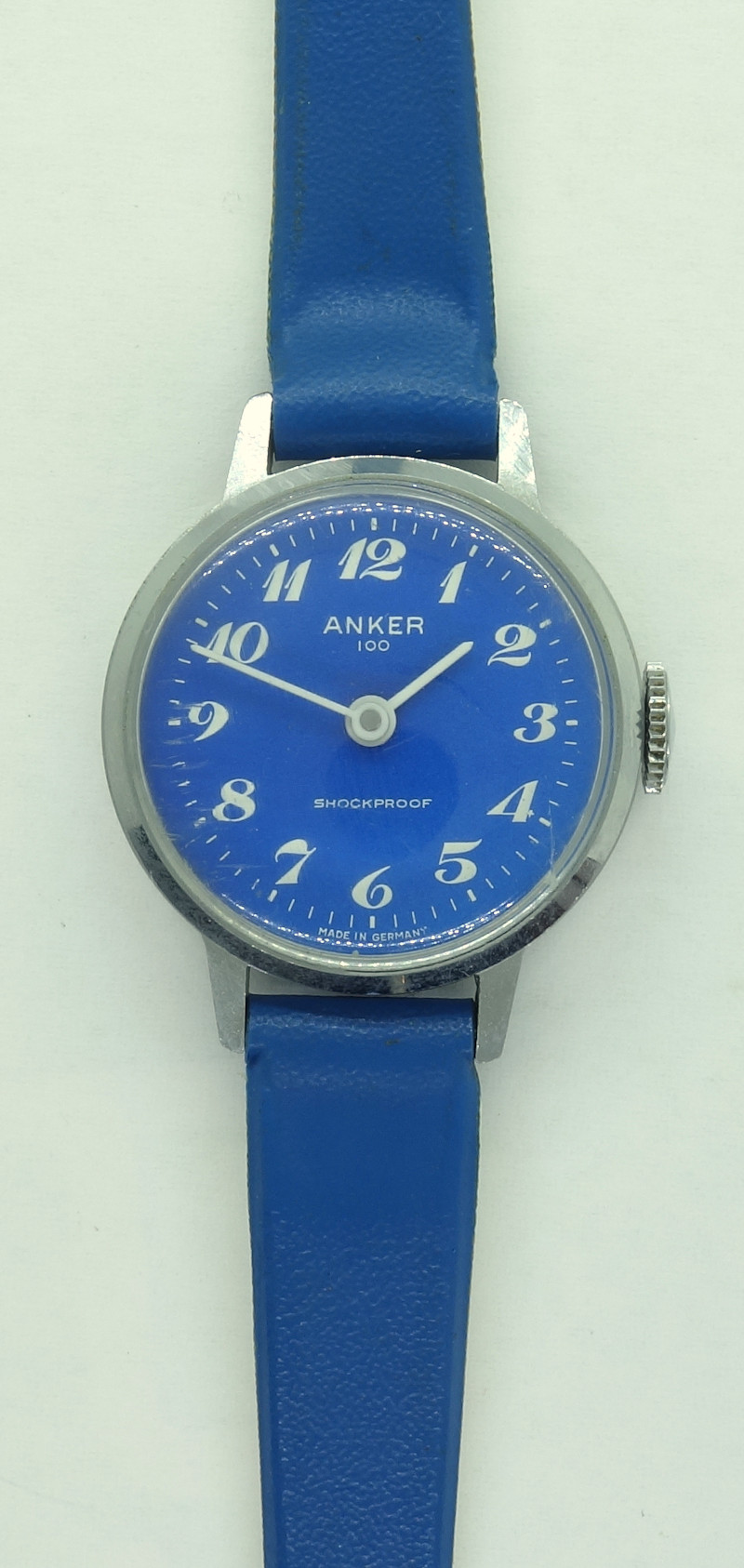
Anker 100 "Shockproof" ladies' watch
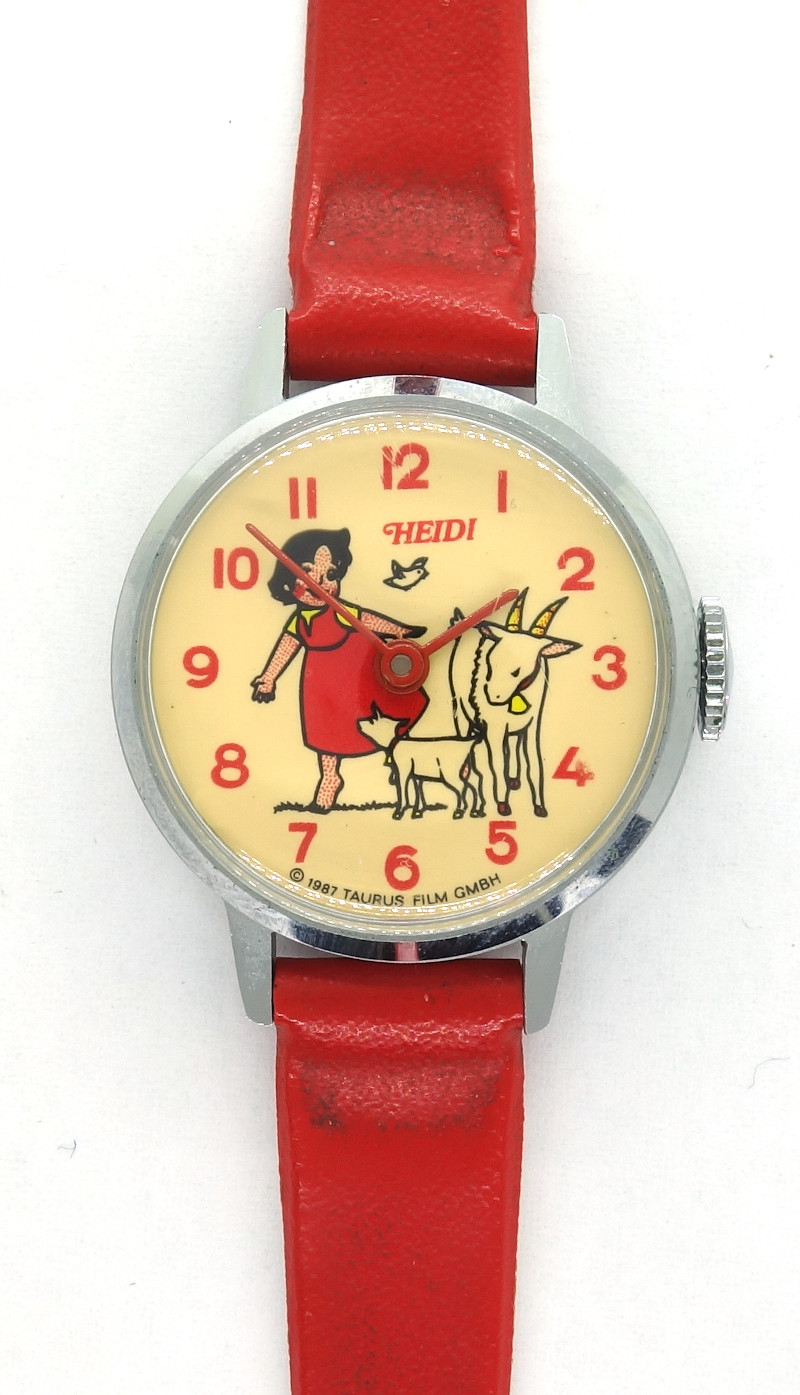
Character watch "Heidi" (1987)

Character watch "Donald Duck"
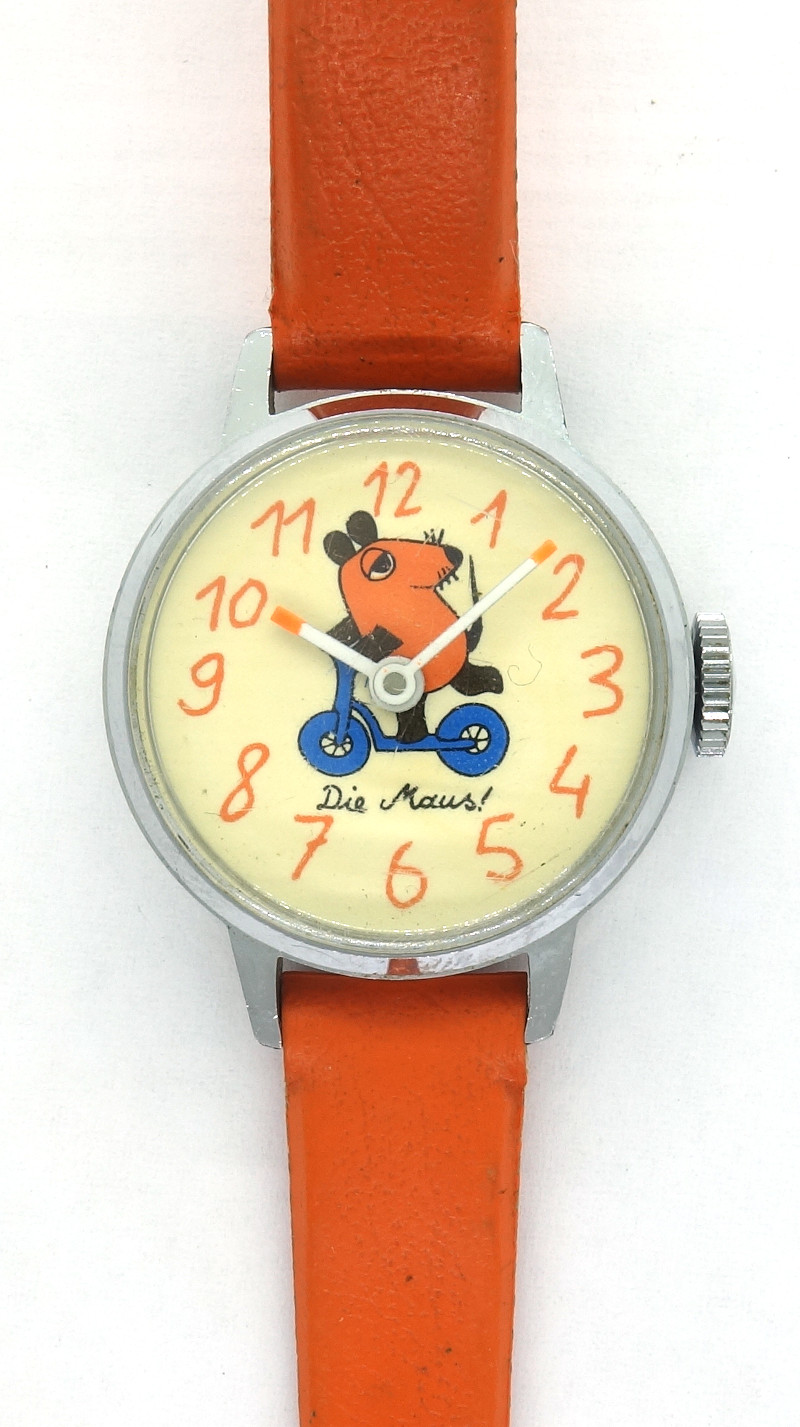
Character watch "Die Maus" (orange)
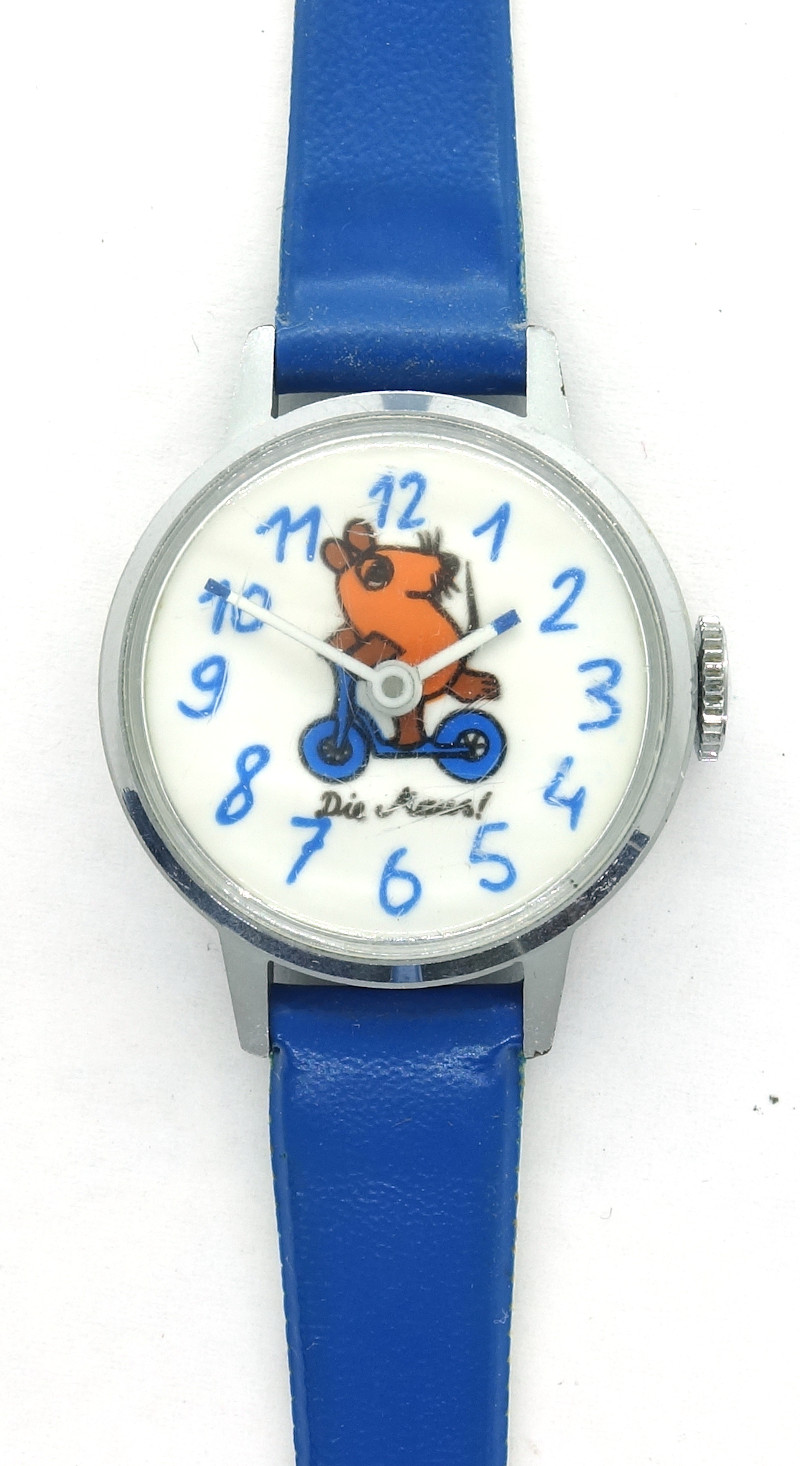
Character watch "Die Maus" (blue)
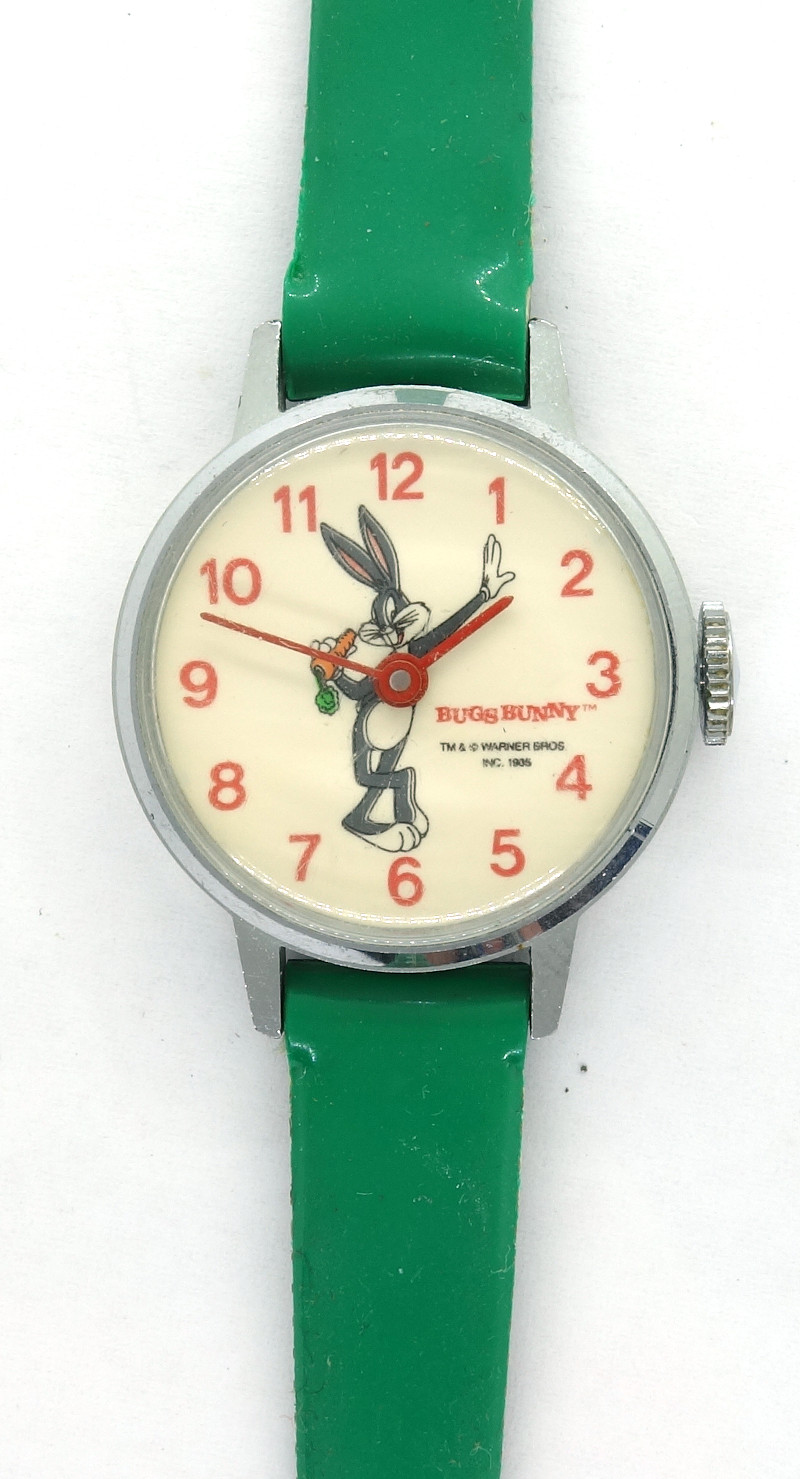
Character watch "Bugs Bunny"
